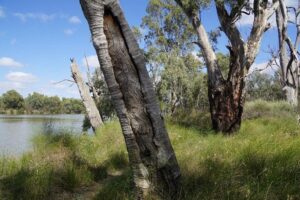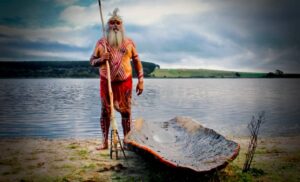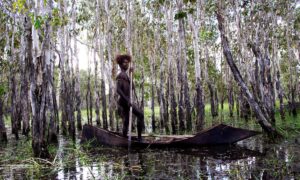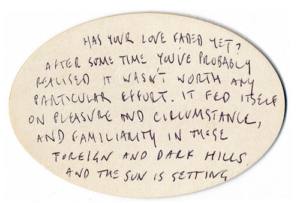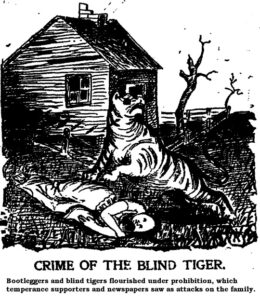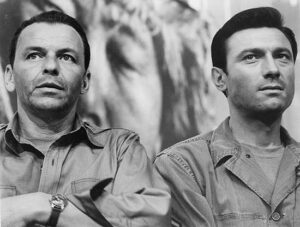
What on earth prompted the Prime Minister to label Richard Marles the Manchurian Candidate. He doesn’t look a bit like Laurence Harvey. But then again, the trailer to the film says that if you come into the film five minutes late you won’t know what it is about. Sounds familiar.
Look, we all know that Richard Marles did go to Geelong Grammar School, and he is the member for Corio. A Cambridge blue scion amid the dark blue singlet brigade of Corio, but known to have actually eaten Beijing duck in Beijing. That must have been the clue which triggered off Marco Morrison, with his rendition of Frank Sinatra.
Now you must know something, Prime Minister, who is this assassin you alluded to because, as you know, the Manchurian candidate was programmed to kill, and the trigger was the queen of diamonds. Are you sure that you are not the target, and who plays the part of the wicked Angela Lansbury as Eleanor, or moreover Janet Leigh then fresh from her Psycho scream?
In a way, the film ended up with there being no Trumps, but you’ll have to see the film to understand exactly what I mean.
Remember the advice above. Don’t be late. Watch the 1962 film before you, caro Scott, utter the words again – if ever.
Pity that Albanese hadn’t seen it either.
The Mammoth in the Room

I read Crikey. The problem is that it has become an exposé for the incompetent and corrupt. One gets the aroma and taste of a foetid Australia. After all, it is an unpleasant business sifting through the garbage to find something worth recycling. I do not know what keeps Stephen Mayne cheerful, given that he would need a gas mask for most issues he crawls through, the Murdoch detritus in particular.
I have already written about John Elliott, and Rundle got it mostly right. The preservation of bluestone warehouses as an Elliot legacy may not read as well as the “Jam Factory” effect, when one sees what happened to those former bluestone warehouses transitioning to “gentlemen’s clubs” at the Yarra end of King Street.
I was not going to go on record about Andrew Peacock, because he was never a serious figure in Australian policy development. Except to say that if he had become Prime Minister, he could have been very good. Andrew was intellectually lazy, but superficially affable with the ability to recruit very good staff. Vanity and a need to be loved always needs therapy, but until Andrew and I spectacularly fell out because of my diatribe directed at him, we had a cordial relationship; however, it was always very ambivalent, even at the best of times.
But contrary to Guy Rundle’s commentary in Crikey, they are not the only remnants of that era. There is still Lloyd Williams to carry the flag for, among other matters, the building and commissioning of the Crown Casino in Melbourne, before an expletive-laden Kerry Packer stepped in to bale out the project.
It was early times but even then the customers were allegedly urinating on the Crown Casino floor rather than give up their spot at the poker machines; and for which persons were sacked for not using “alternative facts” to deny that it happened. Nevertheless, there seems to be an axiom in Australian public life that success in horse racing will forgive any transgressions, and the more so in the number of Melbourne Cups your horses win, the higher one rises in the hagiography stakes. Williams has won seven.
And finally, there is Rupert Murdoch, another alumnus of Geelong Grammar School. Rupert seems to have never spiritually left Melbourne, because even in old age he has the trophy – the trophy that avenged the treatment the “Melbourne establishment” meted out to his father, and originally only left Rupert with a small Adelaide paper as the legacy. The “Herald” may be no more; the “Sporting Globe” may be no more; but son, we will still have the “Herald Sun”.
The mists of time may have meant some lessening of his attachment, but when you say that the old generation has evaporated, I believe it cannot be underestimated how much effect Rupert’s eventual passing will have on Melbourne. None of his children have any reason to venerate Melbourne.
As part of that generation who is disappearing, I grew up in a Melbourne with three morning newspapers and one evening newspaper, which appeared in multiple editions.
I may live to see a time when there may be no Melbourne newspaper, but who knows how many years Murdoch will remain relevant; his last words will not be Rosebud like Citizen Kane, aka William Randolph Hearst, but maybe Langwarrin.
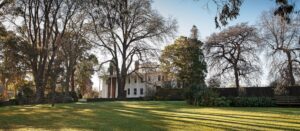
The Slivers of War or Putin’s Lebensraum
His alliance of autocrats would also have a psychological cost inside Russia. It would demonstrate Mr Putin’s dependence on the siloviki, the security bosses who see in Ukraine’s democracy and deepening ties with the West a threat to their own ability to control and loot Russia. It would be a further sign to the liberal capitalists and technocrats who are the other pillar of the Russian state that they had lost. More of the best and brightest would leave; others would give up. Stagnation and resentment would build into opposition likely to be met with heightened brutality. The Economist
A conventional view. Here we have a little ageing Russian secret police agent invading Ukraine to destabilise the world order to satisfy some tortuous agenda. He has had some previous so-called victories in predominantly Russian areas of Ukraine such as Crimea (now plunged into poverty) and along the Ukrainian border in some of the poorer areas where Putin’s war can be cynically described as slum clearances.

Putin may weave and feint, but this is not the Hitler bloodless annexation of the Sudetenland. The Ukrainians are not prepared to embrace their Russian cousins. As he proposes to go deeper into the country, Putin will encounter – while presumably destroying – increasing signs of affluence, towns and cities increasingly becoming costly rubble until he reaches the peak of his ruinous agenda to destroy Kiev, the spiritual capital of everything he professes to hold dear. Icons smashed among the rubble of centuries old tradition. All to satisfy a smirking crypto-maniac full of venom. What have the Russians to gain? Germany found that out in the ruins of 1945 as another maniac met his fate.
So, assume Putin’s troops blast their way to the Polish border into increasing hostile territory, their casualties rising. While the invasion is happening, NATO would be freed from the accusation of aggressor, apart from the bleats emanating from the Russian hackery, but now freed, able to respond. Troops begin pouring over the Belarussian border from Lithuania. The Russian exclave, Kaliningrad is an easy target for missile attack; the new Polish corridor destination.
The ripples of War.
Then what?
But before answering that question, consider this comment in the NYT this week:
The die was cast. The clock has been ticking since then, with Mr. Putin taking enough military action in Georgia and Ukraine to freeze the countries in strategic limbo, as he awaited his moment to avenge the perceived humiliation of Russia by the West after the Cold War’s end
This refers to the aftermath of a NATO summit held in Bucharest in 2008 when it was breezily stated that Georgia and the Ukraine would eventually become part of NATO.
Putin was not amused as he showed us on February 21 this year. Russian troops moved into the disputed area of Eastern Ukraine. This was accompanied by the Russian recognition of the Lugansk and Donetsk Peoples Republics in the Donbas region of Eastern Ukraine, population about 2 million. The recognition of another Sliver Republic. Putin has done it before – for instance, Abkhazia and South Ossetia in Georgia, and Transnistria in Moldova.
Putin has found out that there are initial protests but then these tiny slivers are forgotten, but then they become buffer zones. He seems now to have done it again in Ukraine, and created a buffer zone in a part of Ukraine that NATO are not going to give up their comfortable existence to contest.
OK, there are sanctions, which seem not to be particularly effective, as Germany would remain very dependent on Russian natural gas; others less so, even though NATO is recommending its member countries introduce sanctions on Russia. Germany has refused to sign the agreement to start the flow.
One difference is that while both Moldova and Georgia have small populations, the Ukraine is 55 million against Russia’s 150 million. By his antics, Putin’s chances of quietly re-installing his puppet as Head of the Ukrainian Government are gone especially as there are strong incentives for Ukraine to move to a Western-type democracy.
On the other hand, Belarus is inevitably going to be absorbed into this sliver approach. President Lukashenko grew up to run piggeries and he has learnt nothing. To him, Belarus is just a larger piggery , a mixed metaphor for the rust bucket industries of the lost Soviet Union, as are these new sliver companion tin pots in Eastern Ukraine which also retain rust bucket remnants of the old Soviet order.

It is a wonder that Putin has not taken over Chernobyl as one of his Slivers. It shows what one can do with Soviet nuclear “expertise”, and already as an unexpected consequence provides a buffer between Belarus and the Ukraine.
Of course, there may be another reason for all this. Putin may have just flipped his switch and spends most evenings scheming with Peter and Catherine. “Great, aren’t both of you? Now where is Poltrava exactly?”
May I introduce Q fever
Some years ago, when I was working in North-East Victoria, a transport driver responsible for collecting the waste water from an abattoir in the Ovens Valley presented with a flu-like illness. It took a substantial time for him to be diagnosed with Q fever.
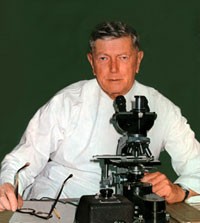
The challenge presented by Q fever is to recognise it, caused as it is by a rickettsia-like organism called Coxiella burneti, named for the Australian scientist, Sir Macfarlane Burnet, who discovered it.
Q Fever is contracted through the inhalation of air or dust from contaminated animals and their environments. Therefore, hazard prevention circulates around respiratory equipment and reducing stirring up sediments in the yards. Sound familiar?
There has been much deliberation over the mandatory vaccination of the population against COVID-19, a cost of which is largely taken up by the Federal government. In contrast to COVID, there are no state or federal subsidies for the Q fever immunisation program due to the low prevalence rate for Australia’s population. In Queensland around 300 people are diagnosed every year. In fact, the symptoms of COVID-19 and Q fever are similar, with high fever and general malaise, including the flu-like illness.
The cost of the vaccination ranges from $150 to $450. It’s not a large outlay but with seasonal staff and low industry retention rates, it adds up. Currently there is no legislation that mandates workers to be vaccinated against Q Fever. However, a business owner is required to manage risks to workers under most workplace health and safety legislation.
If unvaccinated staff are allowed to work with farm animals, appropriate management strategies need to be implemented and provided to employees, for instance PPE, masks, changing from a high pressure hosing system to a low pressure, dust controls in yards, hand washing.
In short, employers are responsible for immunising their staff, otherwise appropriate risk mitigation and prevention strategies need to be implemented. As for this transport driver, whose diagnosis was initially missed, and who developed the chronic form of the disease; he became much more difficult to treat.
At various times, there have been questions about the long term efficacy of the vaccine. But it has been accepted by the industry as being better than nothing and augmented those industries with high health and welfare standards.
Q fever is a disease of the workers, but Australia has not experienced the same scream of the lumpenproletariat shouting “Freedom forever”, their ugly face sprouting from the social media. The worker in question had not been vaccinated against Q fever; and now was destined to a long period of chronic disease and disability.
 Australia has yet to reap the full legacy of “Long COVID”; but let me reiterate, as a legatee of a chronic disease with a recent relapse, I would not wish it on anybody. I cannot be vaccinated against my disease, and thus will never have freedom from it – think about it if you are one of those unvaccinated COVID-19 idiots wrapped in your yellow rags, while you rail against vaccination. You at least can gain protection from the disease. For the unfortunate it may become chronic, when sometimes you may wish for the freedom of dying as preferable. You can be assured that will be “forever”.
Australia has yet to reap the full legacy of “Long COVID”; but let me reiterate, as a legatee of a chronic disease with a recent relapse, I would not wish it on anybody. I cannot be vaccinated against my disease, and thus will never have freedom from it – think about it if you are one of those unvaccinated COVID-19 idiots wrapped in your yellow rags, while you rail against vaccination. You at least can gain protection from the disease. For the unfortunate it may become chronic, when sometimes you may wish for the freedom of dying as preferable. You can be assured that will be “forever”.
Ground hog days in New Hampshire
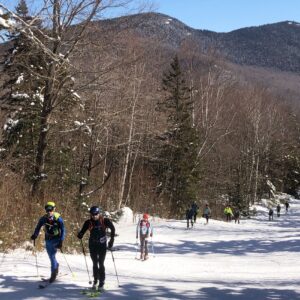
Most skiers were pacing between 42 and 50 minutes per lap, but at 6 a.m. Monday, I walked lap 44 with a 34-year-old from Ohio named Brody Leven who identified himself as a “professional human-powered skier” and had been hitting 39 minutes a lap like clockwork, always at the front of the pack.
“I seek out testing myself. I live for this,” he said, reading off the vertical gain from his watch, now showing 46,771 feet. “I’m competing against them, but I’m competing against myself. And I have no intention of stopping.”
This describes what one of the 100 skiers were doing near Jackson New Hampshire on Mount Black, with “The Last Man (sic) Standing” being the ultimate laurel. This event occurred over a few days recently, when these blokes apparently had nothing to do but indulge in an endurance event of uncertain length. It just depends when the last person is skiing the ultimate run down the Mountain.
Brody Leven happened to be the eventual winner. Sixty-five times he skied up the 1.25 miles to where the vintage chair lift was the marker for the turn for descent. The time allowed was one hour and Brody did it in about forty minutes. Thus, he had twenty minutes to recuperate.
He thanked the journalist for accompanying him because he had stopped on a previous run to help a bloke who was bending over a car only to find out that the man was talking to a rock and a tree. This tendency towards hallucinations makes night time skiing treacherous, but it doesn’t deter these enthusiasts. The Olympic Games may be held contemporaneously in China, but there is other madness abroad.
I thought it must be very lonely on that last ski run when you are on your own and that tree and rock you are trying to avoid is actually a bloke bending over his car.
How long before this practice hits Australia?

Massachusetts General Hospital has agreed to pay $14.6 million to settle a federal lawsuit alleging it fraudulently billed government insurers for surgeries performed by trainees without proper oversight because supervising surgeons were working in another operating room.
The settlement marks the third time since 2019 that the renowned Harvard-affiliated teaching hospital agreed to pay millions of dollars to resolve a claim stemming from the controversial practice known as concurrent surgery, or double-booking, in which surgeons juggle two operations simultaneously. The three out-of-court settlements total $32.7 million.
Beyond contempt, as reported by The Boston Globe. Dodgy practices like this have been rumoured to occur in the bottom feeding area of the health industry, but at the Mass General!
What Bird is That?
February is the best time to be on the west coast of Tasmania. In fact, it has been much drier than normal. This has not deterred the New Holland Honey Eaters from feeding off the kangaroo paws, which thrive under the north facing windows. At the side of the house, the leatherwood tree is in full bloom, and smelling the delicate white flowers provides a honeyed fragrance. This is the time of the year when the bee boxes are everywhere, and near Mount Arrowsmith there is a particularly dense stand of these trees. The jar of leatherwood honey on the kitchen bench is testimony to this intense period of apian activity.
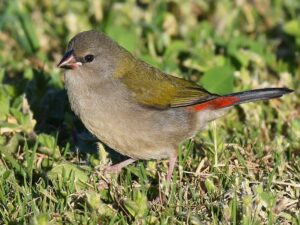
Then my wife came in one morning and said she had seen a bird she did not immediately recognise. We are not bird watchers; I for one do not have the patience. Anyway, a bird that is a visitor to our bush lined property is intriguing. The bird she had seen was small but had a distinctive red tail. After some research, we agreed it was a red browed finch. Being a female, it lacked the red brow, but otherwise the bird picture seemed to confirm that she was that finch.
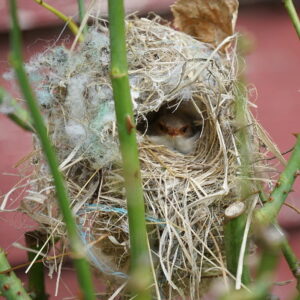
On further reading, it so happens that this bird is found where fairy wrens live. The underbrush on our property is very conducive to being a wren habitat and they share the title to the property. I was having my hair cut outdoors by my wife and the silver strands were going everywhere in the breeze. Our mate said: “Don’t worry about sweeping the hair up. The wrens will come along and line their nests with it.” I was glad to be of service.
Mouse Whisper
Our household always reads the Washington Post’s Voracious Eating. (We have the special rodent edition of Nibble Voraciously). Good word “voraciously”! There is a variety of recipes, many of which have a Central American heritage, and they frequently embody recipes unusual here in Australia.
The commentary attached to each recipe is often entertaining. The following from one distinguished cook may cause the fire brigade bosses to splutter over their lemonade: “The pan is going to get very hot, and when you add liquid to a ripping hot pan, it’s going to sputter. Fear not! If you’re not regularly setting off your fire alarm at home, you’re not really cooking, (Though, you may want to have a splatter screen handy!)



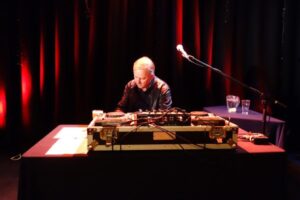

 The wasabi that comes in tubes and packets and is familiar to many diners is actually a blend of wasabi and horseradish dyed green — or contains no wasabi at all. In Japan, chefs at higher-end sushi, soba or grilled beef restaurants grate fresh wasabi at the counter, so customers can experience the acute assault on their nostrils and the unique flavour that lingers for just a moment on the tongue.
The wasabi that comes in tubes and packets and is familiar to many diners is actually a blend of wasabi and horseradish dyed green — or contains no wasabi at all. In Japan, chefs at higher-end sushi, soba or grilled beef restaurants grate fresh wasabi at the counter, so customers can experience the acute assault on their nostrils and the unique flavour that lingers for just a moment on the tongue.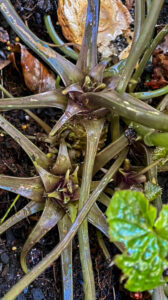 Now, as that wizard green fingered jardineira, Vicki Sheedy, says dismissively, horseradish is a weed. You have to grow it in a pot and not let it get control of the vegetable patch.
Now, as that wizard green fingered jardineira, Vicki Sheedy, says dismissively, horseradish is a weed. You have to grow it in a pot and not let it get control of the vegetable patch.
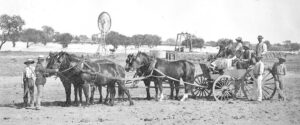 In the 1840s my mother’s family came to Australia from Katowice, which is a major Polish town today but was then Prussia. They settled first in the Barossa Valley but with a shortage of land available there, they walked with their wagons, from South Australia to settle in southern NSW. My maternal mother was a Schröeter. My mother would have been a wonderful subject for “Who do you think you are?”
In the 1840s my mother’s family came to Australia from Katowice, which is a major Polish town today but was then Prussia. They settled first in the Barossa Valley but with a shortage of land available there, they walked with their wagons, from South Australia to settle in southern NSW. My maternal mother was a Schröeter. My mother would have been a wonderful subject for “Who do you think you are?” As of Monday afternoon here, the Russian Olympic Committee team had won 18 medals, the second-highest total behind Norway. But maybe there should be a new category for its medals? “Provisionally won?”, “Won … for now?” “Won, pending further info?”
As of Monday afternoon here, the Russian Olympic Committee team had won 18 medals, the second-highest total behind Norway. But maybe there should be a new category for its medals? “Provisionally won?”, “Won … for now?” “Won, pending further info?”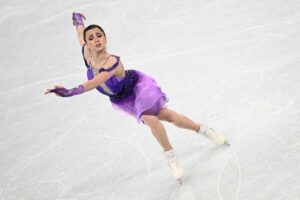

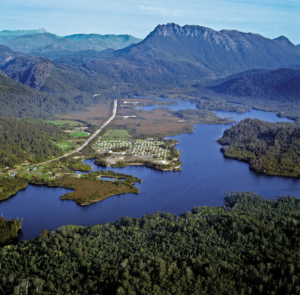
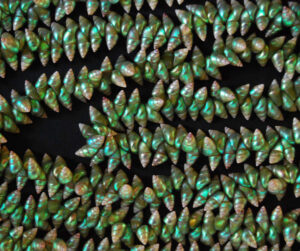
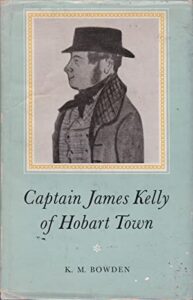 The description of female sealing in the Bass Strait islands is a prime example. No mention of herbs and spices in cooking the young seal. Having personally been one of those who have tasted seal, I would suggest it is not among my top ten gustatory phenomena.
The description of female sealing in the Bass Strait islands is a prime example. No mention of herbs and spices in cooking the young seal. Having personally been one of those who have tasted seal, I would suggest it is not among my top ten gustatory phenomena.
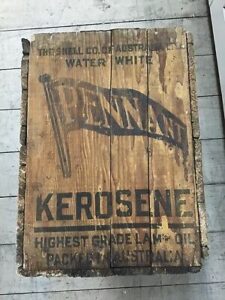
 Some nursing homes are attached to the public hospital. Therefore, I was in a position to influence the rules for visiting doctors. My initial approach was to look at the drug charts of each resident as this gives one an idea of how often the resident is reviewed by a doctor. The need for documentation is as essential as regular visits by the local general practitioner, and each nursing home should have access to a consultant geriatrician or specialist in rehabilitation medicine (and ensure one or the other visits regularly).
Some nursing homes are attached to the public hospital. Therefore, I was in a position to influence the rules for visiting doctors. My initial approach was to look at the drug charts of each resident as this gives one an idea of how often the resident is reviewed by a doctor. The need for documentation is as essential as regular visits by the local general practitioner, and each nursing home should have access to a consultant geriatrician or specialist in rehabilitation medicine (and ensure one or the other visits regularly). Government falls down in the implementation. Many of the ministers and the bureaucrats think that fussing over the nature of enquiry is enough, and unfortunately too much of the intellectual capital is invested in the initial enquiry and its report. In fact, the report is only the start; but too often it is the end point, gathering dust with so many others.
Government falls down in the implementation. Many of the ministers and the bureaucrats think that fussing over the nature of enquiry is enough, and unfortunately too much of the intellectual capital is invested in the initial enquiry and its report. In fact, the report is only the start; but too often it is the end point, gathering dust with so many others.
 In the last blog I, who once was a tall poppy but tried to dance with the “wolverines”, gave some advice based on this experience. I once knew a person who, like Grace Tame, had a strong profile (at one stage being pictured on every evening edition of the Melbourne Herald depicting the successful beautiful young professional) and saw later at firsthand what she endured.
In the last blog I, who once was a tall poppy but tried to dance with the “wolverines”, gave some advice based on this experience. I once knew a person who, like Grace Tame, had a strong profile (at one stage being pictured on every evening edition of the Melbourne Herald depicting the successful beautiful young professional) and saw later at firsthand what she endured.
